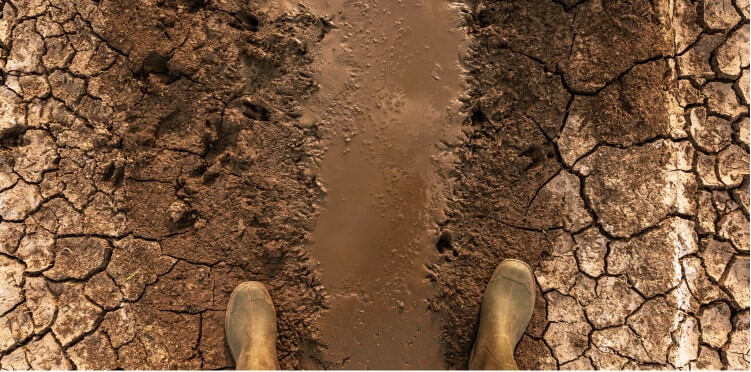Hyundai Motorstudio Senayan Park
Hyundai Motorstudio Senayan Park
Newsroom
-
What is Climate Change?
- Hyundai Motorstudio Senayan Park 2022.09.12
-
During the last few decades, one of the most important issues discussed in the world is climate change which has become the agenda of public debate. The question is, what is climate change ? Why is everyone talking about it all over the world?
To find out the answer, see the information below about what is climate change, the causes of climate change, the impacts of climate change and the efforts that can be done to prevent climate change.
What is Climate Change?
Climate change is a phenomenon of changes in climate patterns that affect changes in weather patterns in an area in the long term. Climate itself is different from the weather. Weather is atmospheric conditions that occur in the short term locally such as wind, rain, flood, cloudy and others.
Meanwhile, climate is related to temperature, rainfall patterns or the average air humidity of each season over a period of years or decades.
The impacts of climate change are many, including: changes in planting seasons, rising earth temperatures, melting polar ice, changes in rainfall and dry seasons, rising sea levels, drought and heat waves, damage to coral reefs, and others.
The impacts of climate change mentioned in each region of the world vary based on geographical position and local scale climatic conditions.
Causes of Climate Change
After knowing what climate change is, the next step is to find out the causes of climate change, including:
1. Greenhouse Effect
The first cause of climate change is the greenhouse effect which comes from greenhouse gases. Several gases in the Earth's atmosphere play a role in this, such as the glass in a house, which traps the sun's heat and stops it from leaking back into space.
2. Global Warming
Global warming activities also cause other climate changes. It is from these industrial installations and power plants that the main emitters of carbon dioxide are produced. Today the global average temperature is 0.85 C higher than at the end of the 19th century.
3. Emission Increase
Increased emissions resulting from human activities such as burning oil, gas and coal that produce carbon dioxide and nitrous oxide are one of the causes of climate change. Increased emissions are also caused by deforestation or deforestation.
Impact of Climate Change
After knowing the causes of climate change, we first consider what the impacts of climate change are, including:
1. Fresh Water Source
Currently, the average availability of water in subpolar areas, wet tropics and river flows is expected to increase by 10-40 percent.
Meanwhile, in dry tropical and subtropical areas, water has decreased by 10-30 percent. As a result, various areas are experiencing severe drought conditions.
2. Ecosystem Extinction
The probability of ecosystem extinction in plants and animals is 20-30 percent. This can happen if carbon dioxide increases in the atmosphere and an increase in global average temperature of 1.5-2.5 C which also increases ocean acidity.
This has a negative impact on marine organisms, for example: coral reefs and the various species that live on these organisms.
3. Food and Forest Products
Estimates of agricultural production in the tropics will decrease, if there is an average temperature increase of 1-2 C which increases the risk of famine.
The increasing frequency of droughts or floods also has a negative impact on local production. Especially, in the provision of food in the tropics and subtropics.
Efforts to Prevent Climate Change
The next step after knowing what it is climate change , its causes and impacts, we need to know and make efforts that can be done to prevent climate change, including:
1. Save energy
By saving energy, we can reduce the effects of greenhouse gases that can cause climate change.
2. Walking, cycling or taking public transportation
This activity will help reduce greenhouse gases while exercising physical fitness.
3. Eat vegetables and reduce consumption of milk and meat
Vegetable production typically produces less greenhouse gases and requires less energy, water and land than dairy and meat production.
4. Reduce travel by plane
Aircraft use a number of fossil fuels that produce significant greenhouse gases.
5. Changing home energy sources
Try switching to renewable energy sources such as solar or wind. By installing solar panels on the roof, this will generate electricity for the house for free.
6. Reduce food waste
If we throw away food we create the resources and energy used for growing, producing, packaging, and transporting.
When food rots in landfills, the methane gas that is generated is what produces greenhouse gases.
7. Switch to electric vehicles
One of the changes that can be made to reduce climate change is to start switching to electric cars or motorbikes. Electric cars will reduce air pollution and emit less greenhouse gases than conventional fossil fuel vehicles.
One type of electric car that can be relied upon is the Hyundai electric car which is more environmentally friendly.
That was some information about what climate change , its causes, its impacts to the efforts that can be made to prevent climate change. The changes we make little by little will be very meaningful and have a big impact on the process of climate change for a better future.




